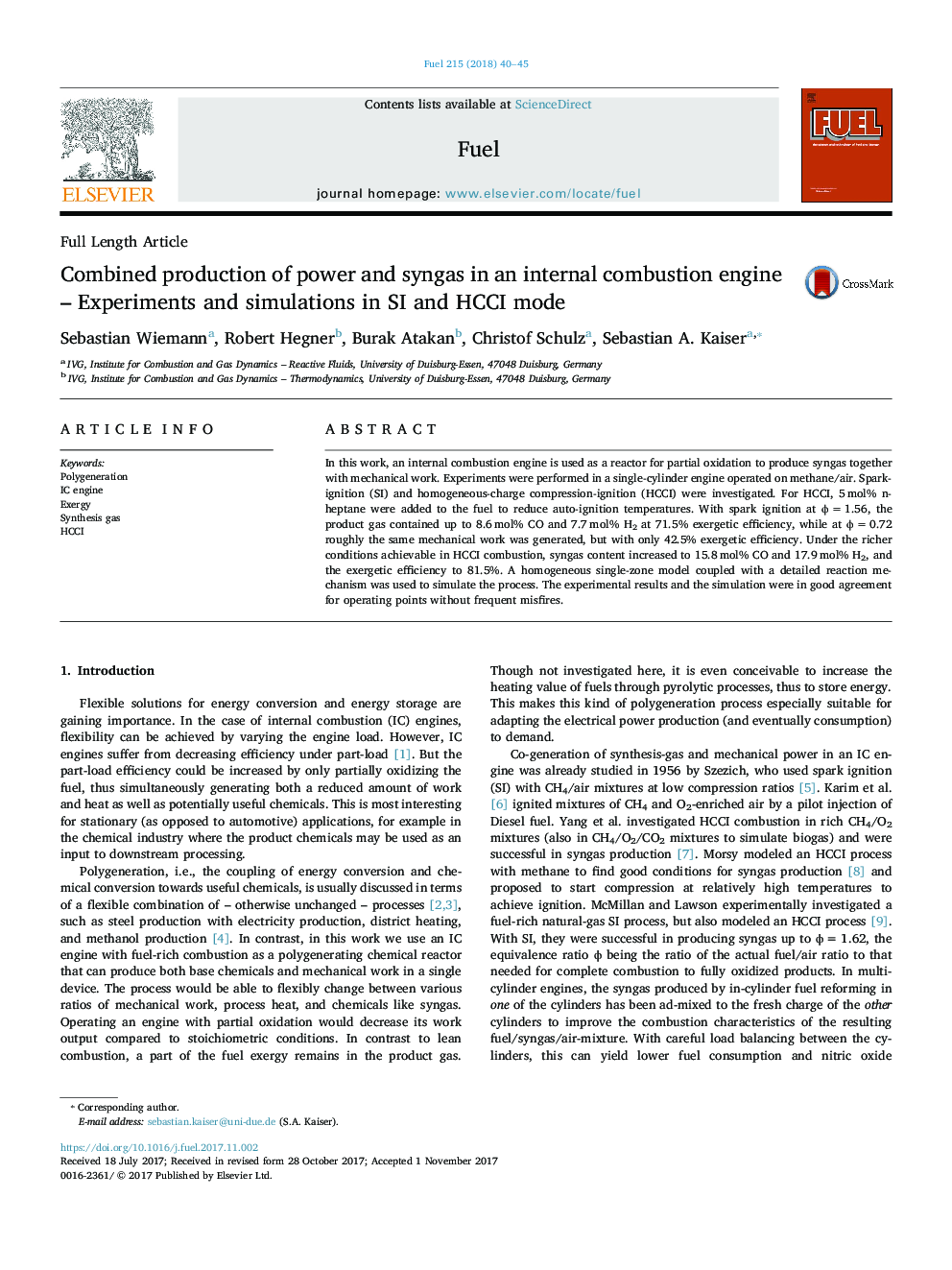| Article ID | Journal | Published Year | Pages | File Type |
|---|---|---|---|---|
| 6632243 | Fuel | 2018 | 6 Pages |
Abstract
In this work, an internal combustion engine is used as a reactor for partial oxidation to produce syngas together with mechanical work. Experiments were performed in a single-cylinder engine operated on methane/air. Spark-ignition (SI) and homogeneous-charge compression-ignition (HCCI) were investigated. For HCCI, 5â¯mol% n-heptane were added to the fuel to reduce auto-ignition temperatures. With spark ignition at Ïâ¯=â¯1.56, the product gas contained up to 8.6â¯mol% CO and 7.7â¯mol% H2 at 71.5% exergetic efficiency, while at Ïâ¯=â¯0.72 roughly the same mechanical work was generated, but with only 42.5% exergetic efficiency. Under the richer conditions achievable in HCCI combustion, syngas content increased to 15.8â¯mol% CO and 17.9â¯mol% H2, and the exergetic efficiency to 81.5%. A homogeneous single-zone model coupled with a detailed reaction mechanism was used to simulate the process. The experimental results and the simulation were in good agreement for operating points without frequent misfires.
Related Topics
Physical Sciences and Engineering
Chemical Engineering
Chemical Engineering (General)
Authors
Sebastian Wiemann, Robert Hegner, Burak Atakan, Christof Schulz, Sebastian A. Kaiser,
